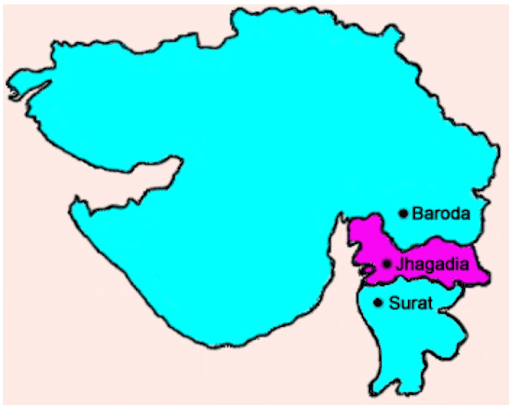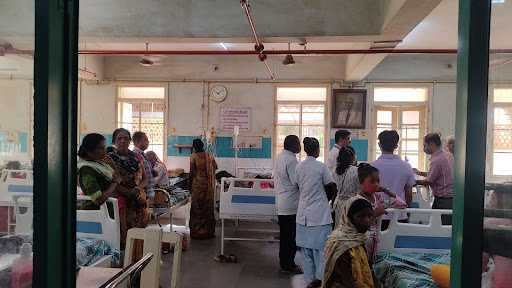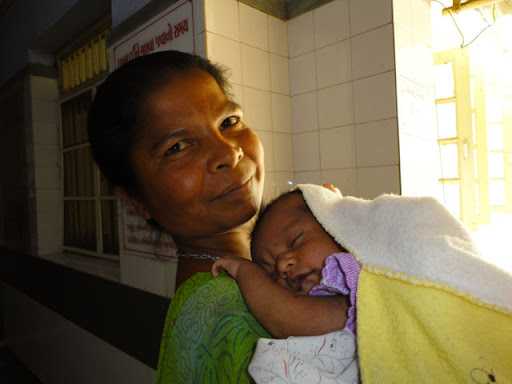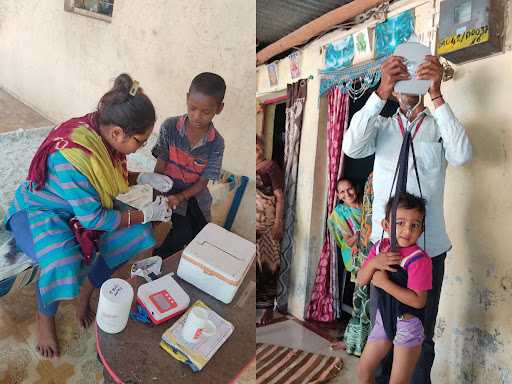Field visit report - SEWA Rural
May 03, 2022 by Utkarsh Hathi
During the month of April 2022, we visited SEWA Rural, a nonprofit organisation working in the Jhagadia block of Bharuch district in the south of Gujarat. There are using Avni for two programs. This is a field visit report.

Jhagadia
Tribal communities form the majority of the population of the region that SEWA Rural works in. The population has been dealing with poverty and challenges in accessing quality affordable healthcare due to poor infrastructure, inadequate government health facilities and prevalent customs and norms practised within the community. Considering the various challenges it was necessary for the organisation to have community awareness along with making primary as well as secondary and tertiary healthcare accessible and affordable.
SEWA Rural runs a hospital in Jhagadia town. Dr. Maitri showed us around the hospital. The hospital has 250 beds.

SEWA Rural hospital
The organisation runs multiple community health programs. Among them are SNCU (Sick NewBorn Care Unit) and Adolescent Care. Avni is being used for these programs. We spend time understanding both the programs and interacting with users.
The SNCU program was started in 2018. It was in 2019-20 that they started using Avni. SNCU Follow up project takes care of all the newborns, discharged from SEWA Rural NICU, till the age of 5 years and those with low birth weight. The infants at risk of mortality or severe illness are transferred to the Neonatal intensive care unit. Once discharged, field supervisors enrol them in the Avni app. The follow-up of these children is done till 5 years of age to improve their nutritional status.To prevent deaths due to preventable causes, look after milestones of the newborns and improve immunization of the all babies, the app helps the field workers in monitoring the health by scheduling visits and displaying indicators on the infants’ nutritional status and illness.

Mother and child
The Adolescent care program focuses on healthcare of adolescents. To do this, health workers visit different Ashram schools, villages and hostels and screen them for anaemia, addiction, and chronic sickness. In addition to this, they conduct awareness programs with adolescents on sexual and reproductive health and menstrual hygeine.

SNCU Child Follow up
We joined the health workers to visit one of the villages of the block. The purpose was to be present while the health workers did the follow-ups at households. There were different challenges users were facing while using the app. There are situations where field workers have to rush to a specific household for an infant with severe illness. This involves a different follow-up schedule from usual. Also, there are times when women have migrated to or from a village which is out of the field workers’ coverage area. Due to poor network in some of these locations, the synchronisation of data is not always successful. Users cannot always remember this before resuming their data collection process. Having some user-friendly way of showing on the app which of the records have been successfully updated on the server can be really helpful. This will help in not losing data and make users work easier. Such interactions with end users on ground help us in getting first hand feedback on how we can improve the product.
After our visit to the village was completed, we returned to the campus where we were staying. In the evening, we spent some time at a nearby ghat of Narmada. It helped us to relax after a tiring day.

Narmada
The Next day we had a meeting with Dr. Dhiren and field supervisors of SNCU to discuss existing issues they were facing with the app. The conversation here with a supervisor who has been working at the organisation for the last 20 years helped us understand the day to day challenges they face in helping the communities. Even today, of all the deliveries that are done at the Kasturba hospital, 30% result in infants with low birth weight or other illnesses. People at times come from as far as 200 to 300 kilometres to avail healthcare at the hospital from neighbouring locations such as Barwani and Nandurbar. These locations are underdeveloped as they are relatively geographically remote and do not have hospitals which can provide them quality care. SEWA Rural does that at a subsidised rate or does not charge in cases where people cannot afford it without compromising on quality of care.
Using Avni has made the work of health workers at SEWA Rural easier. Jyotsana Ben who started working with the organisation 20 years ago explained, “Now I do not have to come to look at thousands of forms everyday, identify children which need to be visited and allocate the work among my peers as that is now done by the application. This reduces dependency on me.”
Do listen to the conversation below where users working with the SNCU program explain along with other benefits how a growth monitoring chart of the child helps engage mothers in her conversations and motivates them to take better care of their children.
SNCU users talk about benefits of using Avni application
It is a moment of great satisfaction for us that our application enables community health workers to spend more time and effort on communicating with beneficiaries for whom they work.

Walking in the village
On a personal note, this was a fulfilling experience for me. I was not aware about the work of the organisation before joining Samanvay foundation and the Avni team. I had been aware to some extent about the underdeveloped state of the region as my hometown is not too far away from Bharuch but to travel there and see the work happening in these locations was a rewarding experience.